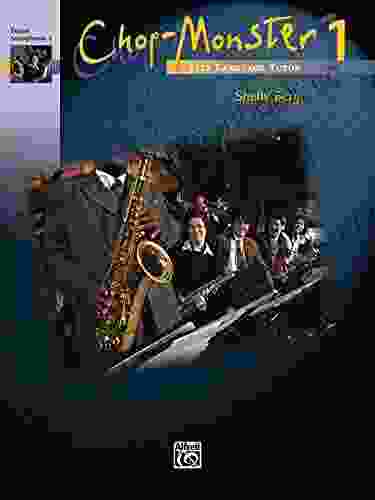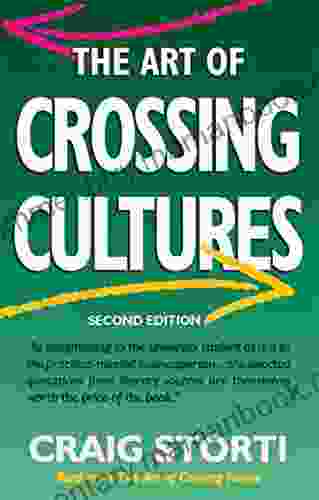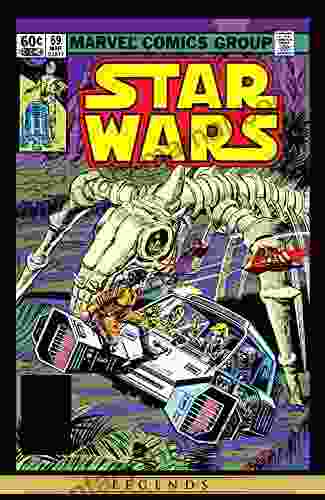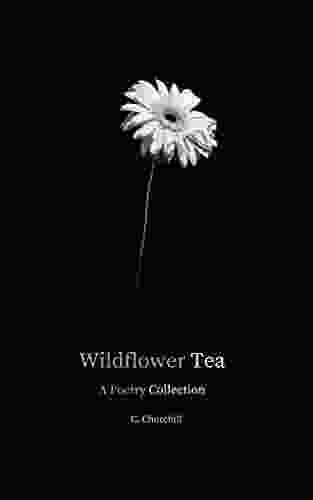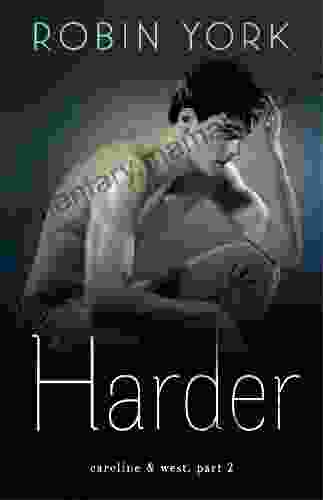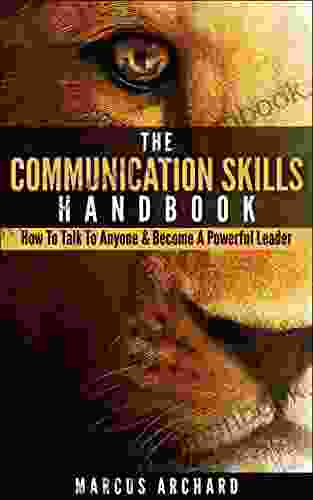The Chop Monster: A Deep Dive into the Legendary Tenor Saxophone Played by Maya Rodale

The saxophone, an instrument renowned for its rich, versatile sound, has played a pivotal role in shaping the landscape of jazz music for over a century. Among the countless saxophones that have graced the stages of legendary jazz clubs and concert halls, there is one particular instrument that stands out as a true icon: the Chop Monster.
Crafted by master saxophone maker Julius Keilwerth in the early 1950s, this tenor saxophone became synonymous with the legendary saxophonist Maya Rodale, who owned and played it for over five decades. The Chop Monster's unique sound, exceptional craftsmanship, and the stories that surround it have cemented its place in jazz history.
4.5 out of 5
| Language | : | English |
| File size | : | 8663 KB |
| Screen Reader | : | Supported |
| Print length | : | 40 pages |
In this article, we will embark on a comprehensive journey to explore the Chop Monster, unraveling its captivating story and examining the factors that make it such an extraordinary instrument. From its origins in Germany to its unforgettable performances on stage, we will delve into the world of this iconic saxophone and the remarkable woman who made it sing.
Origins and Legacy: The Birth of the Chop Monster
The story of the Chop Monster begins in the bohemian hub of Markneukirchen, Germany, where Julius Keilwerth, a renowned saxophone maker, had established his workshop. In 1953, Maya Rodale, an aspiring saxophonist from Philadelphia, visited the town on a quest for the perfect saxophone.
Drawn to Keilwerth's reputation for exceptional craftsmanship, Rodale approached him with a specific request: she wanted a saxophone that could withstand the rigors of her powerful, passionate playing style. Keilwerth, recognizing her talent and determination, set out to create an instrument that would meet her demands.
Over the next several months, Keilwerth meticulously assembled the Chop Monster, paying meticulous attention to every detail. The saxophone featured a large bore, a straight tone hole layout, and a unique keywork design that allowed for lightning-fast fingering. The instrument's body was made from high-quality brass, giving it a warm, resonant sound.
When the Chop Monster was finally completed, Rodale was immediately smitten with its sound and feel. She named it the Chop Monster, a nod to the powerful "chops," or embouchure, she possessed. As she played the instrument, it seemed as if the saxophone became an extension of herself, effortlessly translating her musical ideas into soaring melodies and soulful improvisations.
The Chop Monster's Sound: A Unique Voice in Jazz
The Chop Monster's sound is as distinctive as its history. It possesses a rich, warm tone that is both powerful and nuanced. The instrument's large bore allows for a wide range of dynamic expression, from breathy whispers to thunderous roars, while the straight tone hole layout contributes to its exceptional intonation.
Rodale developed a unique playing technique that fully exploited the Chop Monster's sonic capabilities. She had the ability to produce a wide range of colors and textures on the instrument, from delicate, airy lines to searing, fiery solos. Her playing was characterized by its intense emotion and boundless energy, and the Chop Monster became her trusted companion in conveying these feelings to her audience.
Beyond its technical qualities, the Chop Monster's sound is also shaped by the countless performances it has witnessed over the years. The instrument has graced the stages of some of the world's most prestigious jazz clubs and concert halls, absorbing the energy and history of these hallowed spaces. Its sound is imbued with the stories of countless musicians and the memories of timeless performances.
Maya Rodale: The Saxophonist Who Made the Chop Monster Sing
Maya Rodale was a true pioneer in the male-dominated world of jazz. Born in Philadelphia in 1927, she began playing the saxophone at the age of 15, inspired by the legendary Charlie Parker. Her determination and talent quickly earned her recognition, and she soon became a sought-after performer on the local jazz scene.
In 1953, Rodale embarked on a transformative journey to Europe, where she met Julius Keilwerth and acquired the Chop Monster. The instrument became an inseparable part of her musical identity, and together they forged an enduring partnership that would span over five decades.
Rodale's playing style was characterized by its raw energy, intense emotion, and uncompromising originality. She was a master improviser, capable of spinning intricate melodic lines and creating captivating musical stories on the spot. Her performances were often described as "hypnotic," as she transported her audience on a musical journey through her saxophone.
Rodale's career was marked by numerous accolades and achievements. She toured extensively throughout the United States and Europe, performing with some of the biggest names in jazz, including Dizzy Gillespie, Thelonious Monk, and Art Blakey. She also released several critically acclaimed albums, showcasing her formidable talent and unique sound.
Beyond her musical accomplishments, Rodale was also a dedicated educator and mentor. She taught saxophone at the Berklee College of Music and the New England Conservatory, inspiring countless young musicians to pursue their dreams. Her passion for music and her unwavering belief in the power of education left an indelible mark on the jazz world.
Rodale passed away in 2003, leaving behind a legacy that continues to inspire and captivate musicians and music lovers alike. The Chop Monster, her beloved saxophone, became a symbol of her spirit, embodying the passion, perseverance, and creativity that defined her extraordinary life.
The Chop Monster's Legacy: An Enduring Icon
Today, the Chop Monster remains a highly sought-after saxophone, revered by musicians for its exceptional sound and historical significance. While the original instrument is now housed in the Musical Instrument Museum in Phoenix, Arizona, replicas have been produced, allowing aspiring saxophonists to experience the magic of this iconic saxophone.
The Chop Monster's legacy extends far beyond its physical form. It has become a symbol of creativity, passion, and the enduring power of music. It represents the spirit of Maya Rodale, a true trailblazer who shattered barriers and left an immeasurable impact on the world of jazz.
The Chop Monster, a legendary tenor saxophone played by the remarkable Maya Rodale, is an instrument that transcends its physical form. It is a vessel of musical expression, a symbol of creativity, and a testament to the profound connection between music and the human spirit.
From its origins in a small German workshop to its unforgettable performances on countless stages, the Chop Monster's journey is a captivating tale of passion, perseverance, and the transformative power of music. Its unique sound, exceptional craftsmanship, and the stories it holds continue to inspire and captivate musicians and music lovers around the world.
As we conclude our exploration of the Chop Monster, let us remember the words of Maya Rodale herself: "If you can't hear the music, you'll never play it." May the Chop Monster forever serve as a reminder to embrace our passions, pursue our dreams, and let the music within us sing out.
4.5 out of 5
| Language | : | English |
| File size | : | 8663 KB |
| Screen Reader | : | Supported |
| Print length | : | 40 pages |
Do you want to contribute by writing guest posts on this blog?
Please contact us and send us a resume of previous articles that you have written.
 Top Book
Top Book Novel
Novel Fiction
Fiction Nonfiction
Nonfiction Literature
Literature Paperback
Paperback Hardcover
Hardcover E-book
E-book Audiobook
Audiobook Bestseller
Bestseller Classic
Classic Mystery
Mystery Thriller
Thriller Romance
Romance Fantasy
Fantasy Science Fiction
Science Fiction Biography
Biography Memoir
Memoir Autobiography
Autobiography Poetry
Poetry Drama
Drama Historical Fiction
Historical Fiction Self-help
Self-help Young Adult
Young Adult Childrens Books
Childrens Books Graphic Novel
Graphic Novel Anthology
Anthology Series
Series Encyclopedia
Encyclopedia Reference
Reference Guidebook
Guidebook Textbook
Textbook Workbook
Workbook Journal
Journal Diary
Diary Manuscript
Manuscript Folio
Folio Pulp Fiction
Pulp Fiction Short Stories
Short Stories Fairy Tales
Fairy Tales Fables
Fables Mythology
Mythology Philosophy
Philosophy Religion
Religion Spirituality
Spirituality Essays
Essays Critique
Critique Commentary
Commentary Glossary
Glossary Bibliography
Bibliography Index
Index Table of Contents
Table of Contents Preface
Preface Introduction
Introduction Foreword
Foreword Afterword
Afterword Appendices
Appendices Annotations
Annotations Footnotes
Footnotes Epilogue
Epilogue Prologue
Prologue Pratik Shelke
Pratik Shelke John Cooper Clarke
John Cooper Clarke Ad Putter
Ad Putter Cherry Hill
Cherry Hill V Pathak
V Pathak Dale Mayer
Dale Mayer Cate Lineberry
Cate Lineberry Rob Greenfield
Rob Greenfield Jolin White
Jolin White David Barnett
David Barnett Peter F Hamilton
Peter F Hamilton Camron Wright
Camron Wright Robert Kuttner
Robert Kuttner Tyler Kosloske
Tyler Kosloske Adam Bushnell
Adam Bushnell Robert Montgomery Bird
Robert Montgomery Bird Hayley Shaver
Hayley Shaver Patrick H Donohoe
Patrick H Donohoe Ada Ferrer
Ada Ferrer Terry Bushey
Terry Bushey
Light bulbAdvertise smarter! Our strategic ad space ensures maximum exposure. Reserve your spot today!
 Dustin RichardsonFollow ·4.9k
Dustin RichardsonFollow ·4.9k Zadie SmithFollow ·4.8k
Zadie SmithFollow ·4.8k Brandon CoxFollow ·12.7k
Brandon CoxFollow ·12.7k Calvin FisherFollow ·6.1k
Calvin FisherFollow ·6.1k Virginia WoolfFollow ·15.9k
Virginia WoolfFollow ·15.9k Victor HugoFollow ·17.5k
Victor HugoFollow ·17.5k George MartinFollow ·15.9k
George MartinFollow ·15.9k Rodney ParkerFollow ·15.2k
Rodney ParkerFollow ·15.2k
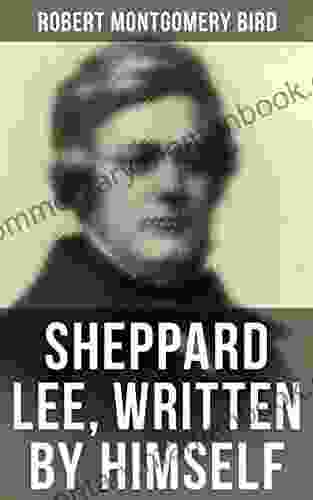
 Kelly Blair
Kelly BlairSheppard Lee Written By Himself: A Journey of...
In the realm of...

 George Bernard Shaw
George Bernard ShawViper Naga Brides: Unveiling the Enthralling Fantasy...
In the realm of...
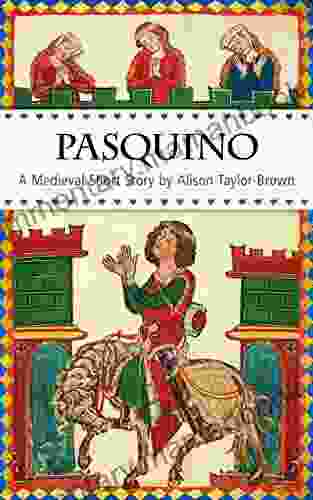
 Neil Gaiman
Neil GaimanOnce Upon a Hill in Tuscany: A Medieval Short Story
In the heart of medieval...

 Preston Simmons
Preston SimmonsBody Bereft: Exploring Loss, Love, and Legacy in Antjie...
A Poetic Requiem for the Lost:...
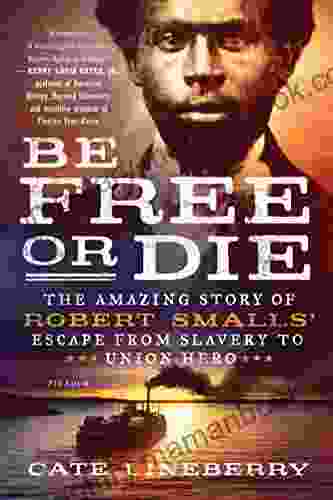
 Percy Bysshe Shelley
Percy Bysshe ShelleyThe Amazing Story Of Robert Smalls Escape From Slavery To...
The life of Robert Smalls is a testament to...
4.5 out of 5
| Language | : | English |
| File size | : | 8663 KB |
| Screen Reader | : | Supported |
| Print length | : | 40 pages |


